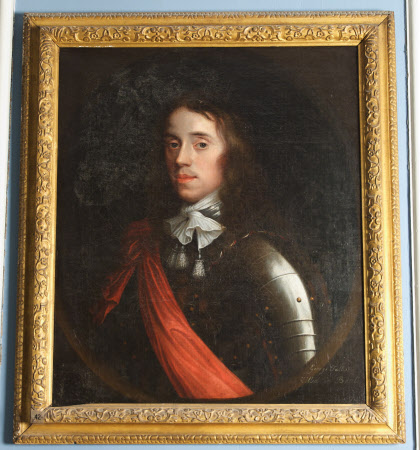George Talbot (son of Sharington I Talbot and Mary Washbourne)
attributed to John Michael Wright (bap. London 1617 - London 1694)
Category
Art / Oil paintings
Date
1600 - 1699
Materials
Oil on canvas
Measurements
667 x 603 mm (26¼ x 23¾ in)
Place of origin
England
Order this imageCollection
Lacock, Wiltshire
NT 996309
Caption
An inscription on this painting identifies the sitter and states that he was ‘killed in battle’. If it can be relied upon, the sitter is probably George Talbot of Rudge, Shropshire, 3rd son of Sharington Talbot I and his second wife Mary Washbourne. His daughter was Sarah, who married Clement Clerke (3rd son of George Clerke of Willoughby, Warwickshire), created a baronet after the Restoration. He was an entrepreneur whose greatest achievement was the application of the reverberatory furnace (cupola) to smelting lead and copper, and to remelting pig iron for foundry purposes. Oliver Millar first suggested the attribution to J.M. Wright. It is close in both demeanour and execution to Wright’s Portrait of Dryden (National Portrait Gallery), which shares the same fall of shadow and use of white highlighting on the face.
Summary
Oil painting on canvas, George Talbot, Son of Sharington I Talbot and Mary Washbourne, attributed to John Michael Wright (1617 - 1694). Inscribed on front with name of sitter: ‘killed in battle’. An oval painted head-and-shoulders portrait, to the left, wearing armour with red sash and white jabot. Possibly George Talbot of Rudge, second son of Sharington Talbot the Elder and his second wife, Mary Washbourne, who was killed in battle.
Provenance
Given by Matilda Theresa Gilchrist-Clark Talbot (1871 – 1958), who gave the Abbey, the village of Lacock and the rest of the estate to the National Trust in 1944, along with 96 of the family portraits and other pictures, in 1948
Credit line
Lacock Abbey, The Talbot Collection (National Trust)
Makers and roles
attributed to John Michael Wright (bap. London 1617 - London 1694), artist British (English) School, artist John Michael Wright (bap. London 1617 - London 1694), artist

